EXPORT SPOT
The North Island’s WEST COAST
■ Proudly brought to you by
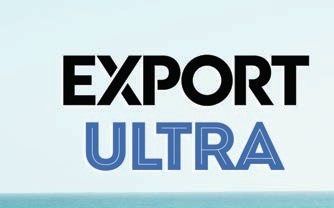

In the second instalment of Export's Spot X series, Ben Brown covers the angling opportunities that await those who wish to fish the less-travelled side of the country. He's done all the hard yards for you, so crack open a cold one and enjoy!
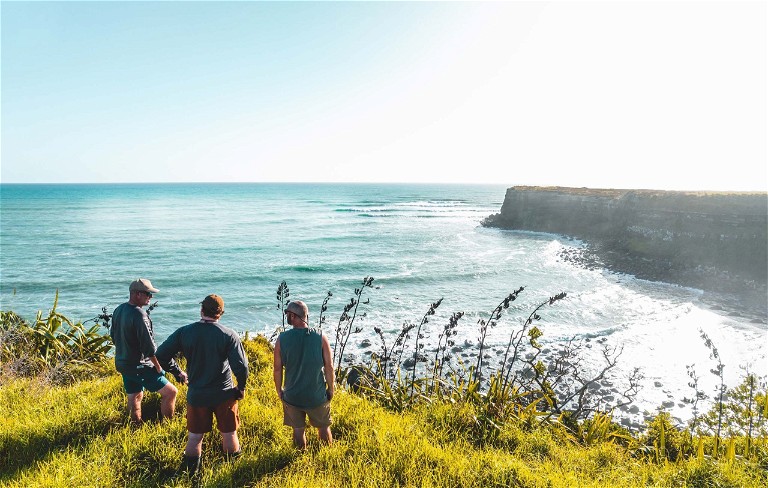
The North Island’s west coast stands as both a formidable challenge and an alluring adventure for fishers. Its location, in the direct path of prevailing southwesterly weather patterns from the Southern Ocean, coupled with perilous sandbars protecting its harbours, often means the idea of a fishing journey ‘out west’ is met with wary glances from fellow anglers. Despite the wellearned reputation for unpredictable weather and occasionally hazardous sea conditions, these very factors contribute to the west coast receiving far less recreational and commercial pressure than its more mildmannered counterpart on the other side of New Zealand. Consequently, when conditions align, the fishing experiences often become nothing short of magical.
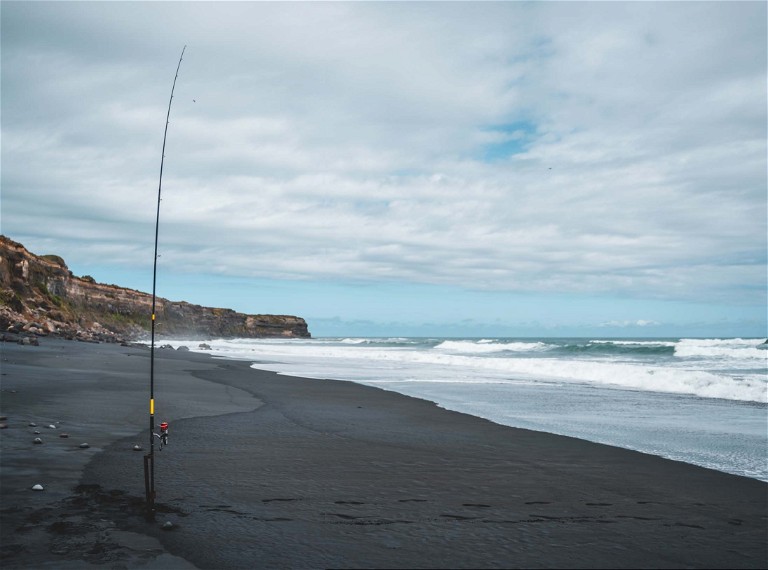
The west coast offers anglers a diverse range of fishing methods and species. From offshore adventures chasing pelagic gamefish and deep-sea dwellers to the simplicity of surfcasting and the charm of inshore harbour fishing, the west coast presents plenty of scope for intrepid and casual fishers alike.
My personal experiences have mainly unfolded along Waikato’s west coast, specifically in the Kawhia and Raglan regions. Additionally, I’ve been fortunate to embark on several memorable trips further north to Hokianga and Ninety Mile Beach, as well as some epic adventures along the Taranaki coast.
“ ITS LOCATION, IN THE DIRECT PATH OF PREVAILING SOUTHWESTERLY WEATHER PATTERNS FROM THE SOUTHERN OCEAN, COUPLED WITH PERILOUS SANDBARS PROTECTING ITS HARBOURS, OFTEN MEANS THE IDEA OF A FISHING JOURNEY ‘OUT WEST’ IS MET WITH WARY GLANCES FROM FELLOW ANGLERS. ”
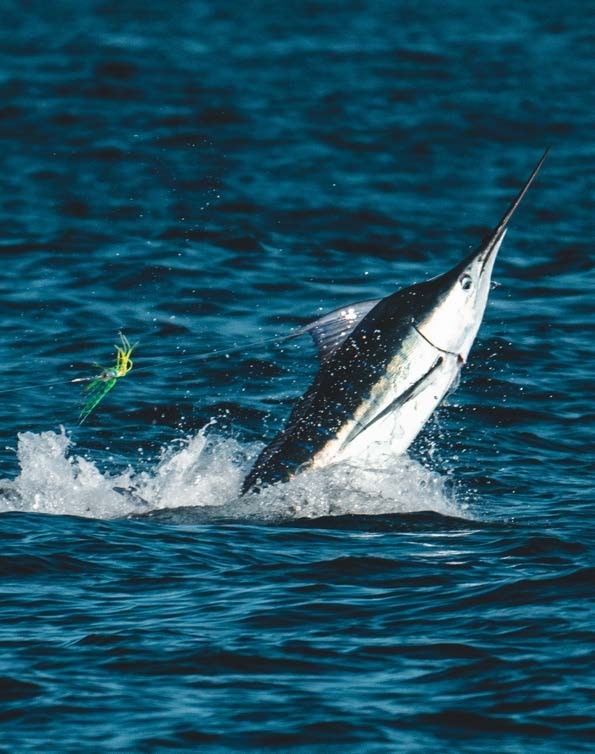
My first taste of how magical the west coast could be was during the spring of 2005. We had recently purchased a piece of coastal land at Aotea Harbour and I was familiar with the region’s reputation for impressive snapper action at that time of year. I had not yet met any seasoned west coast anglers, so our intel was fairly limited but what we had gathered from some boat ramp yarns was that the 50-metre mark was where the action was hot and that the leads on the Kawhia bar were true. So, armed with this knowledge we headed west towards our first (thankfully benign) bar crossing, and onwards to the mythical 50-metre mark, which at the time felt like halfway to Australia! The west coast’s reputation for insane spring snapper action proved accurate. In a mere halfhour, our ledger rigs, loaded with skipjack tuna, yielded double headers of 6-8kg fish, sparking a lasting love affair with the west coast fishery.
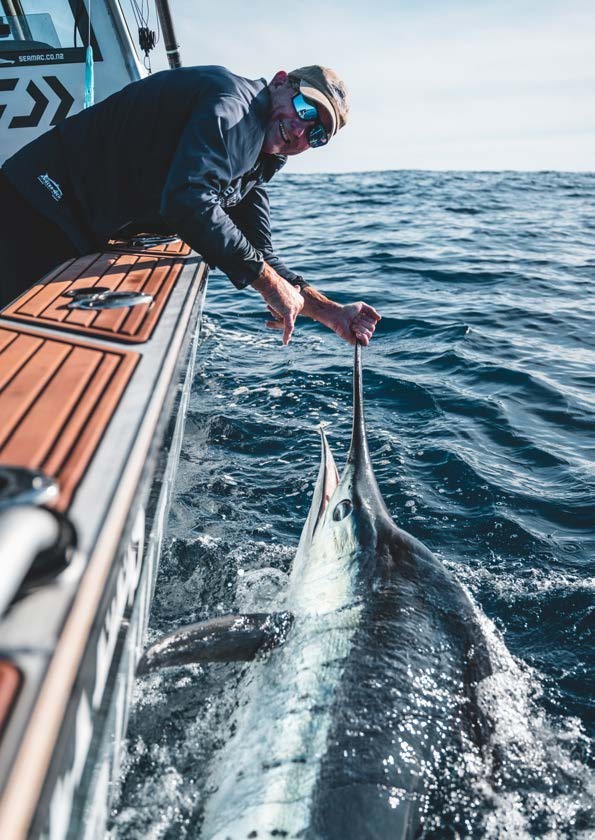
During the warmer months from January through to April the gamefishing, particularly for striped marlin, can be worldclass. The majority of the North Island’s west coast, from Cape Maria Van Diemen to Taranaki, will at certain times of the season hold good numbers of marlin. The northern hotspots of Ahipara and Hokianga boast some amazing gamefishing throughout the season. Ahipara has the added benefit of not requiring a bar crossing, but rather a launch from a black sand beach inside the relative shelter of Shipwreck Bay. The gamefishing is not restricted to striped marlin however, with occasional catches of yellowfin, bigeye and bluefin tuna adding some flavour along with black and blue marlin, including an astonishing blue marlin catch of 466kg off Ahipara to angler Wade Wilson, which also happened to be his first-ever marlin.
Further down the coast the fishing off Kaipara, Muriwai, Manukau, Port Waikato, Raglan and Kawhia will all at times throughout the season produce spectacular fishing – the only downside for the more southern fishos being a much longer run out to the fishing grounds than those in the Far North. The exception to this rule is our friends in Taranaki, who have neither a bar nor a long run to contend with but do have to work around hot and cold gamefishing seasons. It’s fair to say though that when it’s hot down there, it’s really hot – there is no better example of this than the 2016 season when over 500 marlin were caught by New Plymouth Sportfishing and Underwater Club members alone!
For the offshore adventurers, there is also fantastic deep-drop fishing for swordfish, along with the usual suspects of hāpuku, bluenose and bass, spread right along the west coast. Improved sonar technology has opened new grounds once exclusive to the commercial fleet. A quick look at the record books of all the fine clubs spread along the west coast will show notable catches of broadbill swordfish and wreckfish.
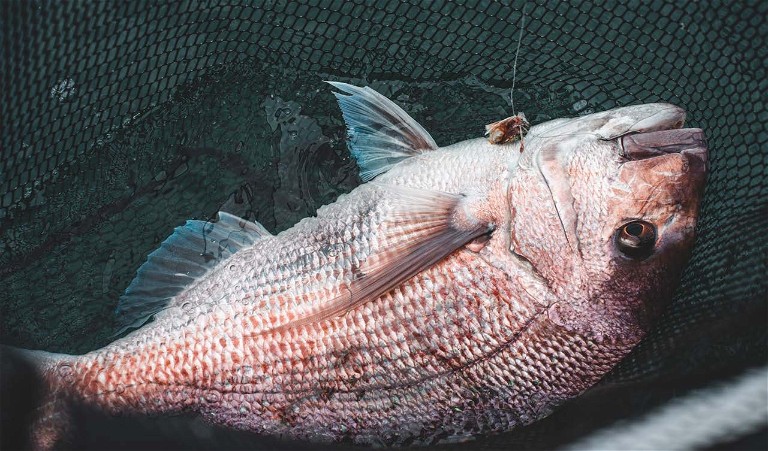
Inshore enthusiasts need not be disheartened; snapper fishing spans the entire year along the west coast, with the general rule of thumb being the snapper will be deeper during winter before slowly coming into the shallows during spring and summer. My favourite time to fish the shallows is in autumn when the skinny water can produce some spectacular catches. While traditional bait and ledger rigs remain popular, shallow water softbaiting offers a thrilling alternative. Sea and weather conditions will certainly dictate when shallow water softbaiting is an option, but when the elements align soft plastic fishing will often produce spectacular catches of snapper, john dory, trevally, and kingfish. Landbased opportunities are equally vast. On a recent
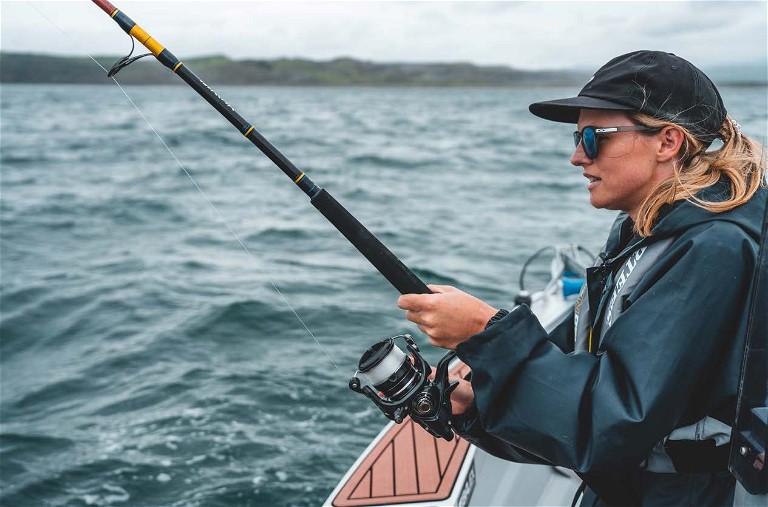
“ THE WEST COAST’S REPUTATION FOR INSANE SPRING SNAPPER ACTION PROVED ACCURATE. IN A MERE HALF-HOUR, OUR LEDGER RIGS, LOADED WITH SKIPJACK TUNA, YIELDED DOUBLE HEADERS OF 6-8KG FISH… ”
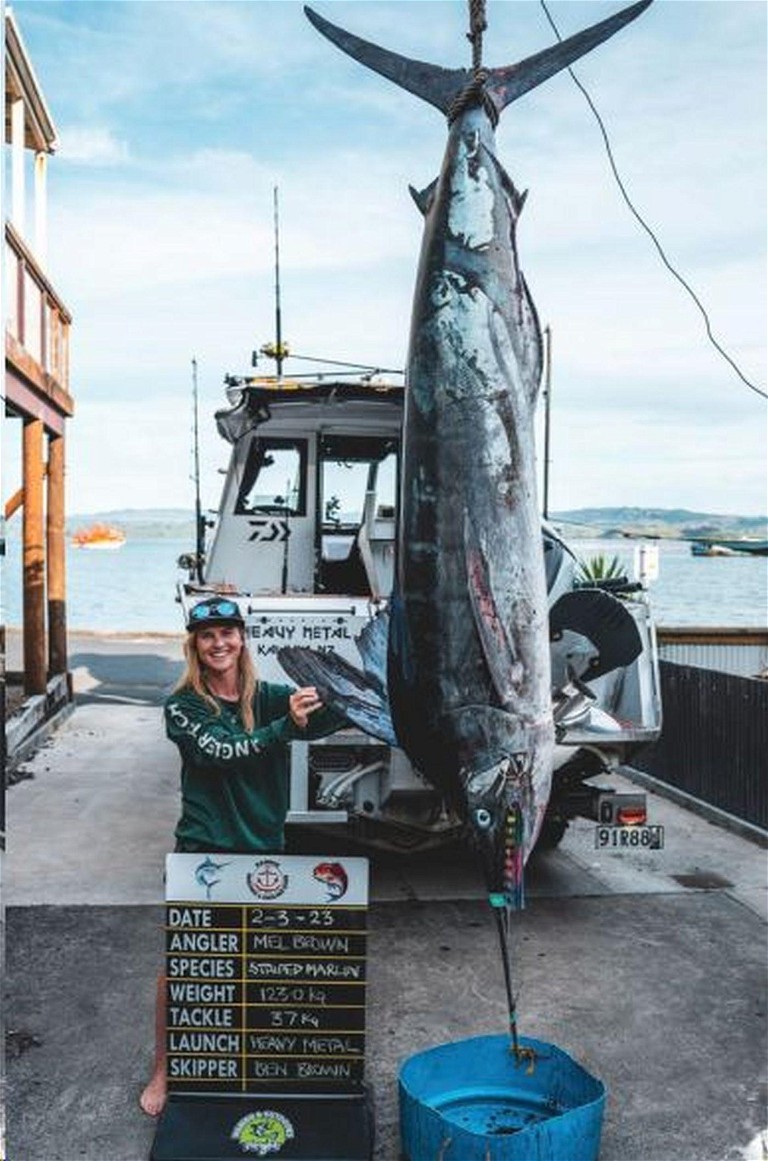
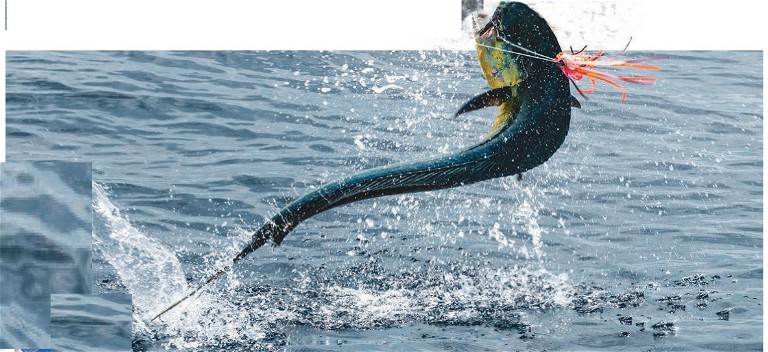
landbased mission to the South Taranaki coast, I was introduced to the intricacies of surfcasting by a couple of local experts – Willis Luttrell and Rusty Campbell. I was blown away by how good the fishing was, with a steady stream of quality table fish hitting the sand along with several larger models. In fact, Willis is the current holder of the 8kg line weight New Zealand snapper record with a fish weighing an incredible 32lb that was caught in his local South Taranaki waters. Further north, surfcasting is no less popular, with Ninety Mile Beach hosting arguably the biggest surfcasting competition in the world, the annual 90 Mile Beach Snapper Bonanza.
For rock fishers, the west coast presents opportunities to chase XOS snapper, trevally, and kingfish, albeit with due caution. Safety is paramount, as conditions can change rapidly along these exposed coastlines.
If you’re not interested in risking life and limb in the pursuit of a fish, the west coast harbours offer a more serene experience. From the expansive Kaipara Harbour to the tiny Herekino Harbour in the Far North, these sheltered waters are home to plenty of fish. The potential for netting opportunities should also not be overlooked, with flatfish and mullet residing in these sheltered waterways. Unlocking the secrets of how to successfully fish a west coast harbour can be a time-consuming but ultimately
“ DURING THE WARMER MONTHS FROM JANUARY THROUGH TO APRIL THE GAMEFISHING, PARTICULARLY FOR STRIPED MARLIN, CAN BE WORLD-CLASS. ”
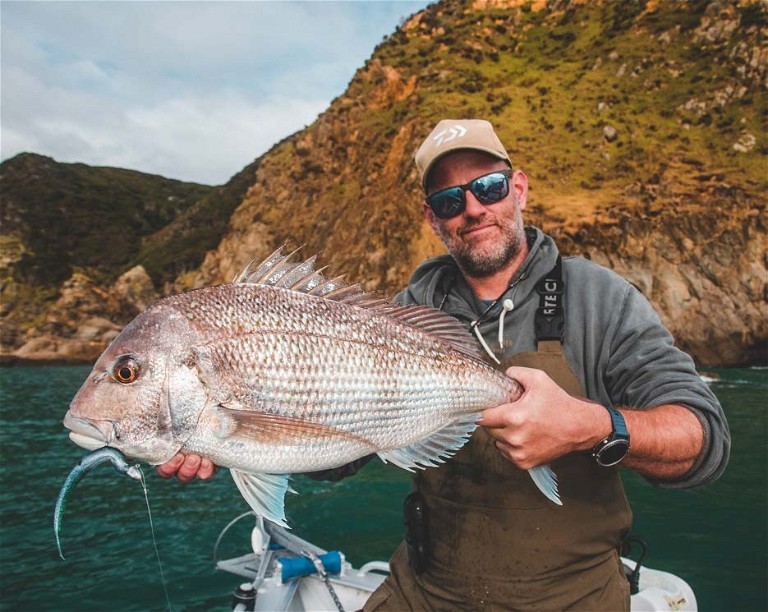
“ WHILE TRADITIONAL BAIT AND LEDGER RIGS REMAIN POPULAR, SHALLOW WATER SOFTBAITING OFFERS A THRILLING ALTERNATIVE. ”
very rewarding process for those willing to put in the effort.
The west coast is a wild and magical place, offering a fishing experience that goes beyond the limits of a few paragraphs. Always approach it with respect, seek local knowledge, and savour the unique charm that the west coast has to offer. Whether you’re drawn to the thrill of offshore adventures, the tranquillity of inshore fishing, or the challenges of landbased pursuits, the west coast promises an unforgettable journey for every angler.
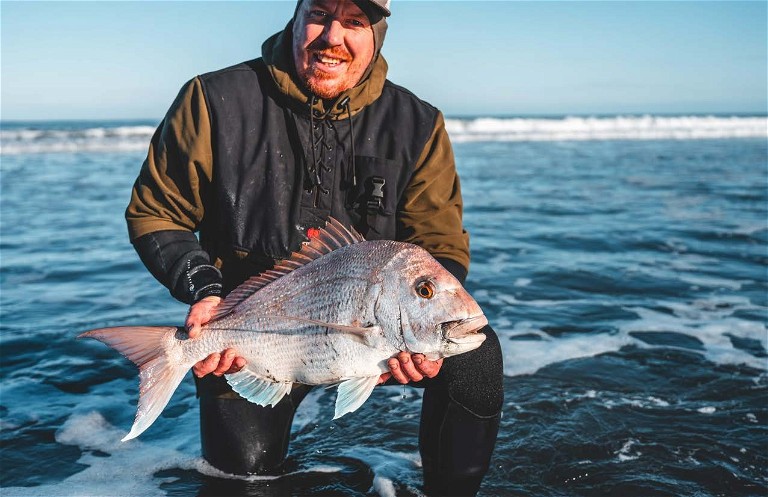
“ I WAS BLOWN AWAY BY HOW GOOD THE FISHING WAS, WITH A STEADY STREAM OF QUALITY TABLE FISH HITTING THE SAND ALONG WITH SEVERAL LARGER MODELS. ”